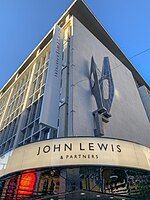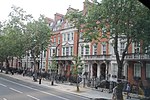Equestrian statue of Ferdinand Foch, London

The Equestrian statue of Ferdinand Foch stands in Lower Grosvenor Gardens, London. The sculptor was Georges Malissard and the statue is a replica of another raised in Cassel, France. Foch, appointed Supreme Commander of the Allied Forces on the Western Front in the Spring of 1918, was widely seen as the architect of Germany's ultimate defeat and surrender in November 1918. Among many other honours, he was made an honorary Field marshal in the British Army, the only French military commander to receive such a distinction. Following Foch's death in March 1929, a campaign was launched to erect a statue in London in his memory. The Foch Memorial Committee chose Malissard as the sculptor, who produced a replica of his 1928 statue of Foch at Cassel. The statue was unveiled by the Prince of Wales on 5 June 1930. Designated a Grade II listed structure in 1958, the statue's status was raised to Grade II* in 2016.
Excerpt from the Wikipedia article Equestrian statue of Ferdinand Foch, London (License: CC BY-SA 3.0, Authors, Images).Equestrian statue of Ferdinand Foch, London
Buckingham Palace Road, London Victoria
Geographical coordinates (GPS) Address Nearby Places Show on map
Geographical coordinates (GPS)
| Latitude | Longitude |
|---|---|
| N 51.4964 ° | E -0.14525 ° |
Address
Foch
Buckingham Palace Road
SW1E 5NE London, Victoria
England, United Kingdom
Open on Google Maps











